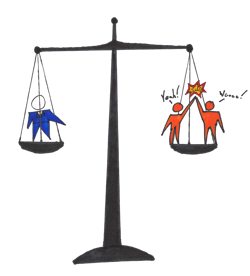 We are lucky enough to have the opportunity to chat with people who lead Lean organizations all of the time. One question we like to ask is, “What are your toughest challenges as a Lean leader?” As you might guess, we get many different answers depending on the type and size of the organization, but one reply seems to come up all of the time.
We are lucky enough to have the opportunity to chat with people who lead Lean organizations all of the time. One question we like to ask is, “What are your toughest challenges as a Lean leader?” As you might guess, we get many different answers depending on the type and size of the organization, but one reply seems to come up all of the time.
If you are struggling to find the right balance between being engaged in improvement and letting your team take ownership of improvement work, you are not alone.
Executive Engagement is Crucial to the Success of Lean
Organizations that effectively embrace Lean see it as more than just a business methodology. It is a way of thinking about work and part of the culture that permeates every aspect of the business. This must start at the top with executives who are willing to go all in on improvement. Successful Lean leaders engage in a number of ways. They:
- Define and communicate “true north”
- Invest in the tools and resources necessary to support improvement work
- Recognize and reward employees and managers who demonstrate the principles of Lean
- Make sure that improvement work is aligned with the strategic goals of the organization
- Track the health of the organization as it relates to Lean goals
Lean leaders are active participants in continuous improvement, but the old adage, “If you want something done right, you have to do it yourself,” does not apply.
Employee Empowerment is Crucial to the Success of Lean
The flip side of executive engagement is employee empowerment. Effective Lean leaders know that everyone must actively contribute to improvement in order for the approach to be successful. After all, it is the people on the front lines who come face to face with waste and opportunities for improvement every day.
In order to harness the collective wisdom of the team, Lean leaders:
- Make it easy for employees to report and act on opportunities for improvement
- Provide Lean training and ensure that everyone is familiar with Lean techniques
- Invest in technology that makes collaboration easy across departments or offices
- Keep an open mind when considering employee ideas for innovation
- Create a culture that allows people to “fail forward”
When it comes to Lean leadership, there is a sweet spot between doing too much and too little. Leaders need to be engaged, while at the same time employees need to feel empowered. When you get the balance just right, you’ll accelerate the pace of improvement, get more innovative ideas from your team, and enjoy the impact of good change.
Watch this free webinar to learn more about Lean leadership:



Add a Comment